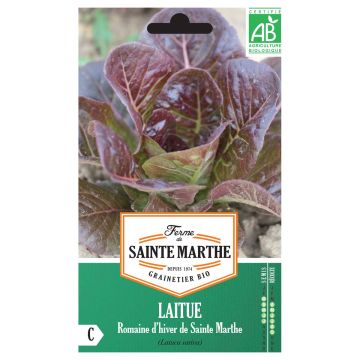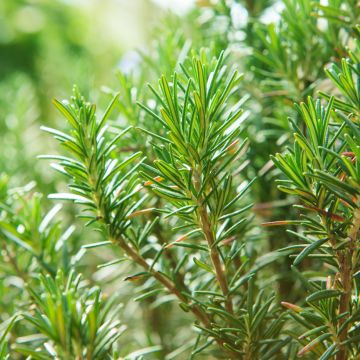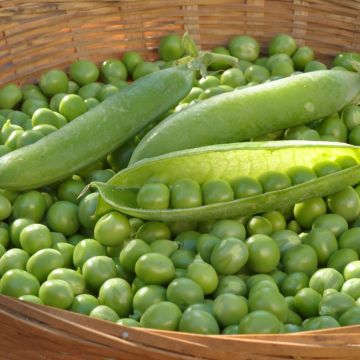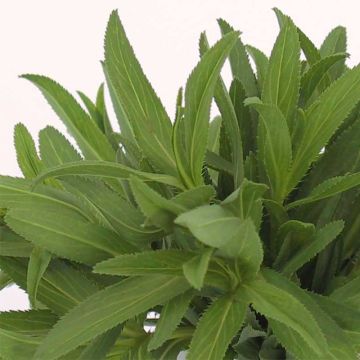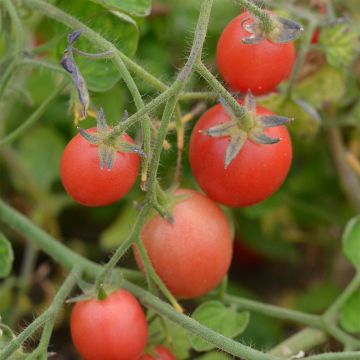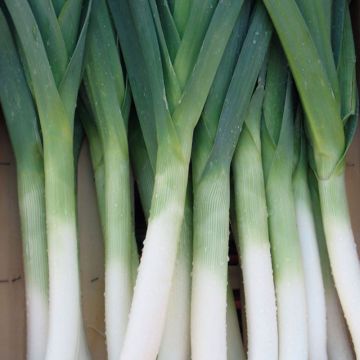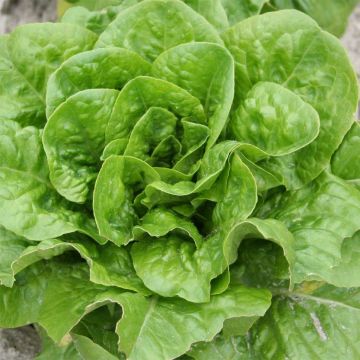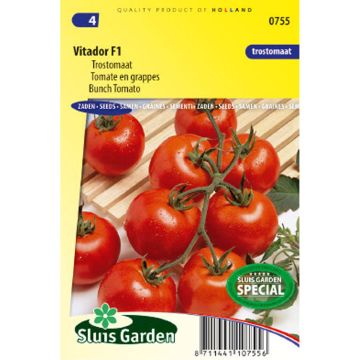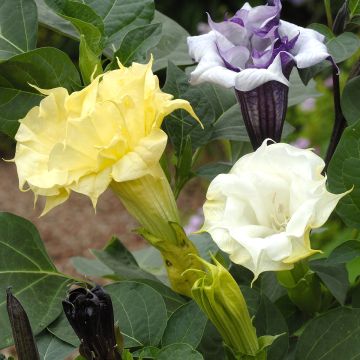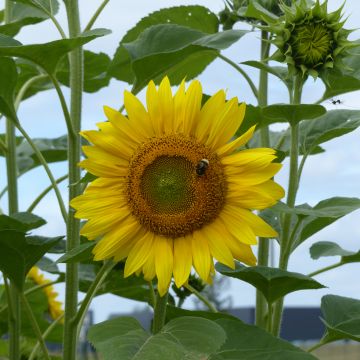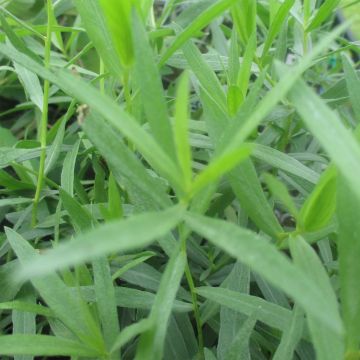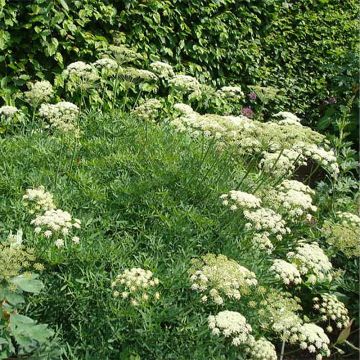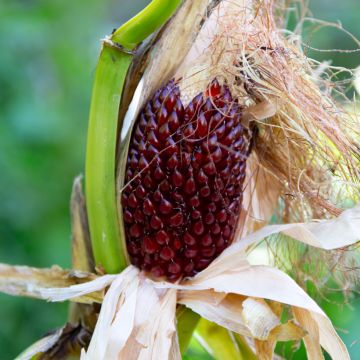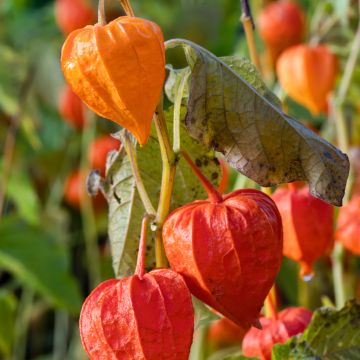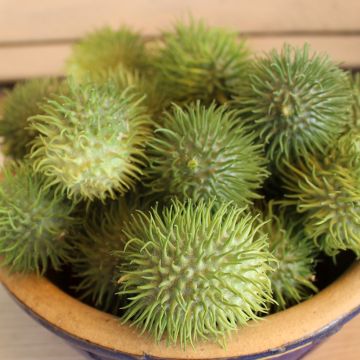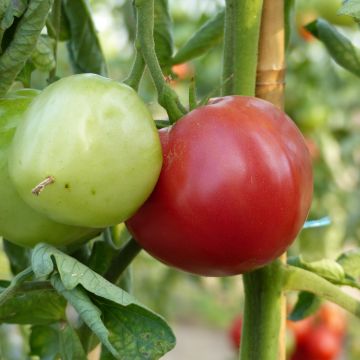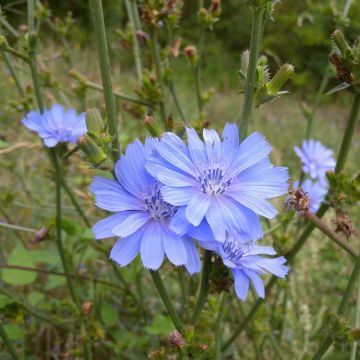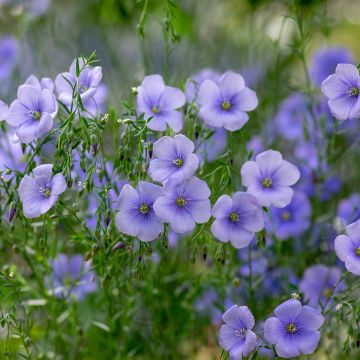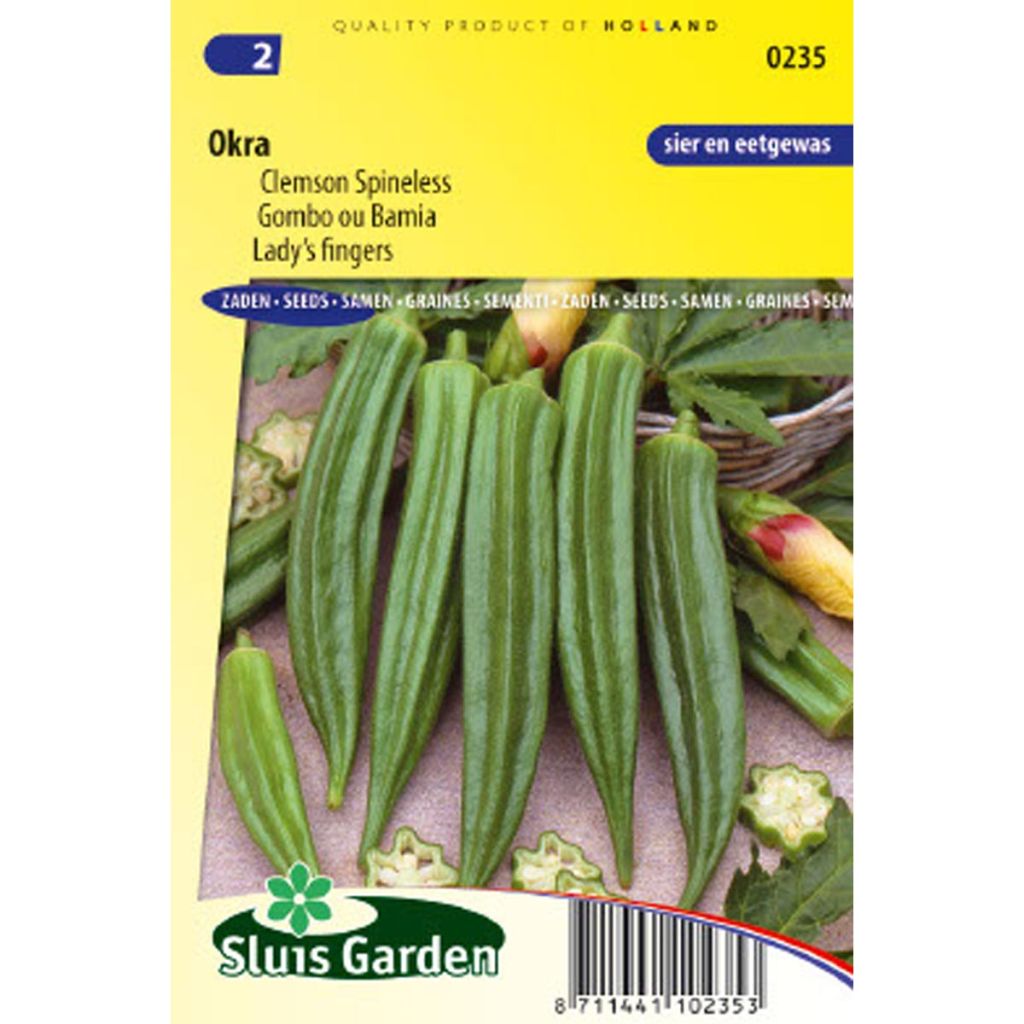

Gombo Okra
Gombo Okra - Abelmoschus esculentus
Abelmoschus esculentus
Gombo, Okra, Cabo, Calou, lalo
This item cannot be shipped to the selected country
Dispatch by letter from €3.90
More information
Schedule delivery date,
and select date in basket
This plant carries a 6 months recovery warranty
More information
We guarantee the quality of our plants for a full growing cycle, and will replace at our expense any plant that fails to recover under normal climatic and planting conditions.
Seed-only orders are dispatched by sealed envelope. The delivery charge for seed-only orders is €3.90.
Description
Le Gombo ou Okra est un légume exotique exigeant en chaleur. Il produit des capsules allongées qui sont consommées crues ou cuites et fait partie des ingrédients de nombreuses recettes africaines et créoles. C’est un légume digeste et peu calorique.
Le Gombo, également appelé Okra, mais aussi Cabo ou encore Calou, est une plante potagère annuelle originaire d’Afrique qui est cultivée aujourd’hui sur presque tous les continents. Il se cuisine en ragout, en soupe ou Mafé, une sauce onctueuse à base de pâte d’arachide qui sert à agrémenter viande et poisson en cuisine africaine.
L’Okra appartient à la famille des Malvacées, comme l’Ibiscus, et dispose d’un port buissonnant érigée et peut atteindre, si elle est cultivée dans de bonne conditions, 2 mètres de haut. Il faut savoir que c’est une plante tropicale, franchement frileuse et exigeante en chaleur. Sa culture à l’extérieur est donc à réserver aux climats particulièrement doux, aux terres riches et bien drainés… et aux jardiniers un peu aguerris. En dehors des régions méditerranéennes, l’idéal est de la cultiver sous serre, idéalement chauffée, car elle ne se développe que si les températures sont supérieures à 16°.
Récolte : la récole s’effectue de juillet à octobre, régulièrement car les fruits, qui se développent très rapidement (4 à 5 jours après la floraison) peuvent devenir fibreux.
Conservation : le Gombo se conserve jours au réfrigérateur ou être séché après avoir préalablement été découpé en fines tranches.
Le petit truc du jardinier : Afin de limiter les arrosages, nous vous conseillons, à partir de fin mai, de pailler le sol avec de fines couches successives de tontes, si possible mélangées avec des feuilles mortes. Cette protection, qui permet au sol de rester humide, limite également le désherbage.
Report an error about the product description
Harvest
Plant habit
Foliage
Botanical data
Abelmoschus
esculentus
Malvaceae
Gombo, Okra, Cabo, Calou, lalo
Cultivar or hybrid
Annual
Other Vegetable seeds from A to Z
Planting and care
Semis :
Le semis du Gombo s’effectue sous nos climats, en fin d’hiver ou début de printemps, sous abri, à une température qui se situe entre 21 et 32°. La germination intervient généralement sous 14 jours.
Vous sèmerez à partir de fin février, au chaud à la maison, en godet garnis d’un bon terreau pour semis et idéalement dans un propagateur chauffant ou au-dessus d’un radiateur. Les graines sont à enfouir à une profondeur d’un centimètre. Placez vos pots en pleine lumière et arrosez en pluie très fine. Il convient de maintenir le substrat humide mais non détrempé.
La plantation définitive est possible une fois que tout risque de gel est dépassé. Avant l’installer vos plants à l’extérieur, il convient de les « endurcir » en les exposant progressivement, pendant une dizaine de jours, aux conditions extérieures.
Lors de la plantation, les plants seront espacés de 50 cm en tous sens.
Culture :
Le Gombo se plaît au soleil, en situation chaude et en terre fertile et bien drainée. Il nécessite des arrosages réguliers. Si un apport de compost est nécessaire, il sera effectué de préférence à l’automne, sous la forme de de compost très mûr, par griffage sur une profondeur de 5 cm, après avoir, comme pour toute culture potagère, bien décompacté le sol.
Seedlings
Care
Intended location
-
, onOrder confirmed
Reply from on Promesse de fleurs
Vegetable seeds
Haven't found what you were looking for?
Hardiness is the lowest winter temperature a plant can endure without suffering serious damage or even dying. However, hardiness is affected by location (a sheltered area, such as a patio), protection (winter cover) and soil type (hardiness is improved by well-drained soil).

Photo Sharing Terms & Conditions
In order to encourage gardeners to interact and share their experiences, Promesse de fleurs offers various media enabling content to be uploaded onto its Site - in particular via the ‘Photo sharing’ module.
The User agrees to refrain from:
- Posting any content that is illegal, prejudicial, insulting, racist, inciteful to hatred, revisionist, contrary to public decency, that infringes on privacy or on the privacy rights of third parties, in particular the publicity rights of persons and goods, intellectual property rights, or the right to privacy.
- Submitting content on behalf of a third party;
- Impersonate the identity of a third party and/or publish any personal information about a third party;
In general, the User undertakes to refrain from any unethical behaviour.
All Content (in particular text, comments, files, images, photos, videos, creative works, etc.), which may be subject to property or intellectual property rights, image or other private rights, shall remain the property of the User, subject to the limited rights granted by the terms of the licence granted by Promesse de fleurs as stated below. Users are at liberty to publish or not to publish such Content on the Site, notably via the ‘Photo Sharing’ facility, and accept that this Content shall be made public and freely accessible, notably on the Internet.
Users further acknowledge, undertake to have ,and guarantee that they hold all necessary rights and permissions to publish such material on the Site, in particular with regard to the legislation in force pertaining to any privacy, property, intellectual property, image, or contractual rights, or rights of any other nature. By publishing such Content on the Site, Users acknowledge accepting full liability as publishers of the Content within the meaning of the law, and grant Promesse de fleurs, free of charge, an inclusive, worldwide licence for the said Content for the entire duration of its publication, including all reproduction, representation, up/downloading, displaying, performing, transmission, and storage rights.
Users also grant permission for their name to be linked to the Content and accept that this link may not always be made available.
By engaging in posting material, Users consent to their Content becoming automatically accessible on the Internet, in particular on other sites and/or blogs and/or web pages of the Promesse de fleurs site, including in particular social pages and the Promesse de fleurs catalogue.
Users may secure the removal of entrusted content free of charge by issuing a simple request via our contact form.
The flowering period indicated on our website applies to countries and regions located in USDA zone 8 (France, the United Kingdom, Ireland, the Netherlands, etc.)
It will vary according to where you live:
- In zones 9 to 10 (Italy, Spain, Greece, etc.), flowering will occur about 2 to 4 weeks earlier.
- In zones 6 to 7 (Germany, Poland, Slovenia, and lower mountainous regions), flowering will be delayed by 2 to 3 weeks.
- In zone 5 (Central Europe, Scandinavia), blooming will be delayed by 3 to 5 weeks.
In temperate climates, pruning of spring-flowering shrubs (forsythia, spireas, etc.) should be done just after flowering.
Pruning of summer-flowering shrubs (Indian Lilac, Perovskia, etc.) can be done in winter or spring.
In cold regions as well as with frost-sensitive plants, avoid pruning too early when severe frosts may still occur.
The planting period indicated on our website applies to countries and regions located in USDA zone 8 (France, United Kingdom, Ireland, Netherlands).
It will vary according to where you live:
- In Mediterranean zones (Marseille, Madrid, Milan, etc.), autumn and winter are the best planting periods.
- In continental zones (Strasbourg, Munich, Vienna, etc.), delay planting by 2 to 3 weeks in spring and bring it forward by 2 to 4 weeks in autumn.
- In mountainous regions (the Alps, Pyrenees, Carpathians, etc.), it is best to plant in late spring (May-June) or late summer (August-September).
The harvesting period indicated on our website applies to countries and regions in USDA zone 8 (France, England, Ireland, the Netherlands).
In colder areas (Scandinavia, Poland, Austria...) fruit and vegetable harvests are likely to be delayed by 3-4 weeks.
In warmer areas (Italy, Spain, Greece, etc.), harvesting will probably take place earlier, depending on weather conditions.
The sowing periods indicated on our website apply to countries and regions within USDA Zone 8 (France, UK, Ireland, Netherlands).
In colder areas (Scandinavia, Poland, Austria...), delay any outdoor sowing by 3-4 weeks, or sow under glass.
In warmer climes (Italy, Spain, Greece, etc.), bring outdoor sowing forward by a few weeks.

































